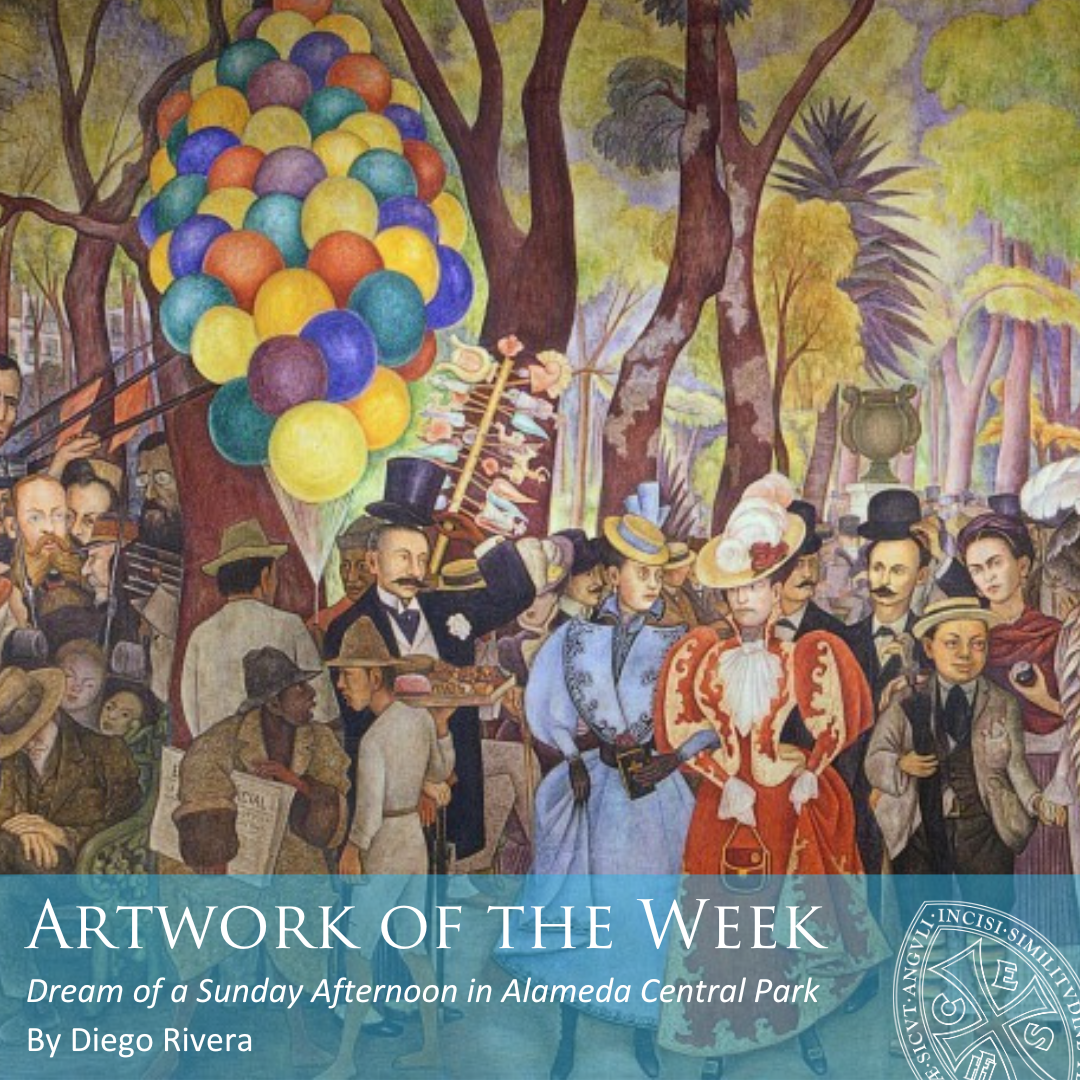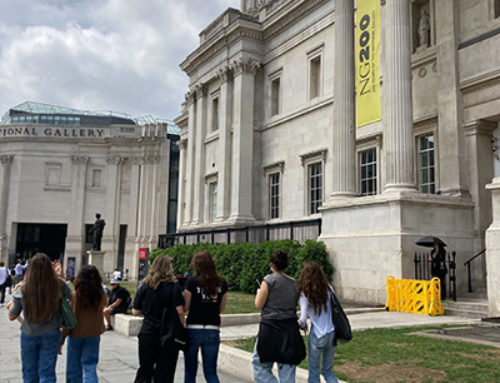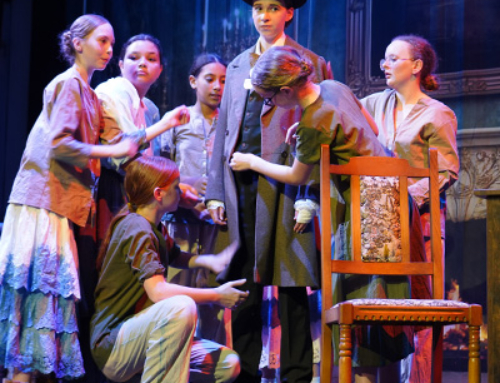Hello and welcome back to Artwork of the Week! This week I will be talking about a painting by Diego Rivera which I feel represents Latin American culture very well, and which resonates well with me as I am a Latina.
“Dream of a Sunday Afternoon in the Alameda Central Park” is one of the most famous paintings by the renowned Mexican muralist, Diego Rivera. The painting was completed in 1947 and was originally a mural which lasted over 20 years in the Hotel del Prado in Mexico City. However, there was an earthquake in 1985 which destroyed everything but the mural, so it was transported to the Museo Mural Diego Rivera in Mexico City, where it is currently on display. This painting is a 15-foot-long mural, filled with rich symbolism and political commentary that speaks to the history of Mexico and its people. It was extremely well received by the public and resulted in high popularity as it is a vivid depiction of the country’s indigenous heritage and a celebration of their history. It also captures the spirit of communities in everyday life Mexico and as Rivera said, “the mural is about my memories”.
The fresco depicts a lively scene in Mexico City’s Alameda Central, a public park. In the centre of the mural, we see a young Diego Rivera standing in front of his wife, the Mexican painter Frida Kahlo. This is symbolic as Frida is almost protecting him and supporting the ten-year-old-boy representation of Diego. He is also surrounded by the printmaker and draftsman Jose Guadalupe Posada, who had designed the woman depicted as a skeleton, ‘La Catrina’, who is also in the central group. Frida also holds a yin and yang object in her hand showing how superstition is central to many Mexicans and she led him through life despite the ups and downs of their relationship.
They are surrounded by a variety of people from different eras in Mexican history, ranging from pre-Columbian figures to the Mexican Revolution. Some depicted figures who are important are Sor Juana (the 17th century nun and a famous Mexican writer), Hernan Cortes (a Spanish conqueror who instigated the fall of Aztec Empire), Francisco I. Madero, and Porfirio Diaz (a dictator who spawned the Mexican Revolution) showing how they are all gathered together in a scene that speaks to the complexity and diversity of Mexican culture. La Catrina’s belt buckle displays an Aztec astrological sign, showing engagement with Mexican Aztecan culture
One of the striking aspects of the mural is its use of colour. Rivera employs a vivid palette, with bright reds, yellows and greens, to bring the scene to life. The colours are not only aesthetically pleasing, but also symbolic as they are often seen in everyday life in Mexico and celebrations or parades.
The mural’s composition is equally impressive. Rivera masterfully uses perspective to create a sense of depth and movement within the scene. The figures are arranged in a way that creates a dynamic sense of space, drawing the viewer’s eye across the painting and suggesting that they almost read the painting from left to right, as he arranged the groupings of historical figures in chronological order. Additionally, Rivera’s use of intricate details and strong, bold lines make the mural visually striking and memorable.
In terms of its political commentary, “Dream of a Sunday Afternoon in the Alameda Central” is a powerful statement on Mexico’s history and social struggles. The presence of the pre-Columbian figures and the revolutionary heroes speaks to the importance of Mexico’s indigenous roots and its struggle for independence. The mural also includes images of political figures, such as Porfirio Díaz and Benito Juárez, highlighting the country’s tumultuous political history. It represents 3 eras of Mexicanidad – the Spanish conquest, the Porfiriato dictatorship, and the 1910 Revolution as seen in the formally dressed politicians on the far right hand side of the mural and also the protester’s flags woven in the air. There is a sense of expression and freedom in this painting shown by the range of actions of the people.
The reason why this is one of my favourite paintings by Diego Rivera is because it is a stunning mural that speaks to Mexico’s complex history and cultural heritage. I like that the painting allows the viewer to see the what they want to see. From a distance one can see the colourful balloons, impeccably dressed visitors, and vendors with diverse wares cannot conceal the darker side of this dream. However, we can also see a confrontation between an indigenous family and a police officer; a man shooting into the face of someone being trampled by a horse in the midst of a skirmish; a sinister skeleton smiling at the viewer which could perhaps represent the dark past of Mexico including motifs of violence. It appears to convey a sense of community and unanimity as over 400 figures march together at the viewer; however it highlights the country’s ongoing struggles for social justice and political freedom and serves as a reminder of important historical figures’ impact on the social aspect of Mexico and gathers them all together surreally.
Thank you so much for reading!
Gaia S, Sixth Form Art History Rep















